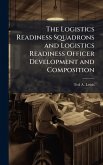The logistics support structure of the U.S. Army has evolved continuously in order to provide efficient and effective support to Army forces. Logistics officers are critical in providing decisions that allocate support to Army forces. In the past, these logistics officers specialized in one of three basic logistics branches: Transportation, Ordnance or Quartermaster. Recent developments in doctrine, organizational change and technology require logisticians to understand the entire combat service support system. This monograph examines whether the U.S. Army should consolidate the officer corps of the Transportation, Ordnance and Quartermaster Corps into one multifunctional branch. This monograph analyzes changes in: logistics doctrine, organizations, technology, and historical analysis of the efforts of other organizations to consolidate elements of there combat service support structure. This analysis will determine whether the conditions exist that support the formation of a multifunctional logistics officer corps and if this action can provide added efficiency to the U.S. Army. The Army could consolidate the officer corps of the Transportation, Ordnance, and Quartermaster corps into a Multifunctional Logistics Officer Corps to gain efficiency in combat service support. The recent changes in doctrine, organization and emerging technology indicate that logistics officers are performing in this role now. Conducting the consolidation could combine resources of the three branches and result in a training program that would result in thoroughly trained multifunctional logisticians at the tactical, operational and strategic levels. This work has been selected by scholars as being culturally important, and is part of the knowledge base of civilization as we know it. This work was reproduced from the original artifact, and remains as true to the original work as possible. Therefore, you will see the original copyright references, library stamps (as most of these works have been housed in our most important libraries around the world), and other notations in the work. This work is in the public domain in the United States of America, and possibly other nations. Within the United States, you may freely copy and distribute this work, as no entity (individual or corporate) has a copyright on the body of the work. As a reproduction of a historical artifact, this work may contain missing or blurred pages, poor pictures, errant marks, etc. Scholars believe, and we concur, that this work is important enough to be preserved, reproduced, and made generally available to the public. We appreciate your support of the preservation process, and thank you for being an important part of keeping this knowledge alive and relevant.
Bitte wählen Sie Ihr Anliegen aus.
Rechnungen
Retourenschein anfordern
Bestellstatus
Storno








